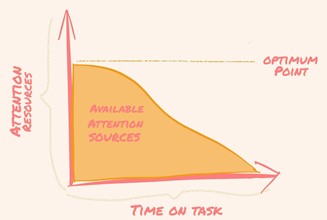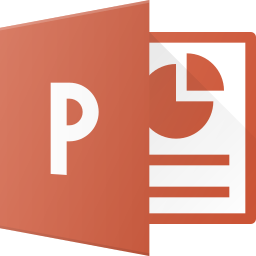
Training content development
You will engage with different studying materials at different stages of the module:
Before the start of the module you will fill a survey to assess your current thoughts on mental fitness and attention in older age.
In the introduction of the module you read expository texts, study images and watch videos. In the mid-of-module you can engage in different practices that utilize attention in digital technologies. The end-of-module concludes with a quiz that aims to assess your current knowledge.
Pre-Assessment:
Overview:
You have probably heard people say “Brain is like a muscle. You need to use it to maintain it.” With old age this is especially true. The more you use your mind, the more things stick with you.
Just as good nutritional practices and exercise programs keep people physically fit, mental fitness exercises help you to improve cognitive skills like perception, memory and attention. This module will specifically focus on the mental exercises to improve your attention in a digital world which has an increasing desire to attract our attention.
Let’s start with some definitions!
3.1 Mental Fitness:
Efforts to improve cognitive functioning is an important point of discussion since the ancient Greeks (Connor, 2001). Starting from the late 1970s there are many training programs for older adults that have proved to have positive effects on cognitive functioning for seniors (Thompson & Foth, 2005). The definition of mental fitness derives from these researches. Even though there isn’t a one-size-fits-all definition, mental fitness in the context of our module means the ability to concentrate, think clearly and creatively.
Attention related declines are one of the most reported concerns related to old age (Thompson & Foth, 2005). In order to fight the effects, mental fitness exercises can help a person regain or sustain their cognitive abilities. Participating in mental fitness exercises do not require prior experience. You might have already contributed to your mental fitness by participating in some of these daily activities:
Reading, Travel, Taking Courses, Singing in Choirs, Playing Card Games, Doing Crosswords etc.
Take travel for instance. Traveling to a new place requires both problem solving abilities and spatial orientation. Doing cross words functions the verbal and spatial components of short-term memory (Raphel, 2020).
We will look at some basic mental exercises you can use to sharpen your attention skills but for now let’s look at what we mean by attention and how it is different from concentration.
3.2 Attention and Concentration: What is the difference?
Consider this example. It is Sunday afternoon, you are in your living room, you have done the dishes and put the kettle on to make tea. A family member is sitting on the armchair watching TV while you sit at the table which is cluttered with receipts and such. Your plan is to review your budget, schedule your payments and log them into your notebook.
You sit down and start to work, without paying attention to each and every one of the sensory experiences coming from the TV or the kettle, you manage to center your attention on certain important elements while the other things pass by.
Or, perhaps as you log your expenses, all of a sudden, a dog starts to bark. This throws you out of your concentration and it takes a little time until you regain your focus again.
These examples suggest that focusing our attention to important things is an essential part of life. Human beings are capable of managing their attention to important things, and when it is compromised, our lives might become more challenging.
Even though they are used interchangeably, attention and concentration are not the same thing. Let’s check out what we mean by both of them:
Attention:
In simple terms, attention is the state of focus on a task or on a subject. You might come across different categories of attention such as divided attention and selective attention.
Selective Attention is the type of attention we use in our example where we focus on a particular object or task for a period of time (Wilkes,2020).
Divided Attention is the state of mind while our focus is on more than one task. It is also referred to as multitasking (Wilkes,2020).
Castle and Buckler (2009), summarizes three main methods to theorize attention:

Attention as a filter:
In this theory attention is a filter or funnel in which you receive a lot of information but only one or very few get selected to be processed.
Attention as a spotlight:

In this theory, attention is like a spotlight where you have the flexibility to direct your focus towards relevant information. It is always possible to “focus on the wrong area” or “focus on the right area for too long” so that you lose your concentration (Castle & Bucker,2009).
Attention as a resource:
In this theory attention is like a “pool with limited capacity” (Castle & Bucker,2009). As long as you continue to receive new information, your mind will reach its capacity at some point where you can no longer concentrate on new information.
Concentration:
Concentration is the ability to maintain attention for a certain amount of time. By increasing your attention to the relevant information and decreasing your attention to distractions, you can keep your concentration for a longer time.
According to the Oxford Learner’s Dictionary (2021) distractions are the things that take your attention away from what you are doing or thinking about.
Distractions that you should avoid can be internal or external. Internal distractions can be psychological ones like lack of motivation, thinking about the past, worrying about the future or physical ones like fatigue or hunger (Castle & Bucker,2009).
External distractions can be noise like the barking dog in our first example, or other sensory distractors like a flash of light coming from your phone (Castle & Bucker,2009).
Now that we have covered the terminology, let’s look at an area of life where we require high attention skills: Digital Technologies.
It becomes hard to imagine our lives without using some kind of digital technology. Digital Technology, in our case, means the general term that encapsulates both digital devices such as PCs, laptops, mobile phones, tablets; and digital content like social media platforms, multimedia, websites etc (Redecker,2017). As these technologies become more and more complex each day, for a person who was not born into this digital age, navigating through digital technologies without compromising attention becomes challenging.
We have already covered attention as a resource theory. According to this definition, our attention has its limits. Digital technologies compete for this limited source and build different methods to attract our attention which might have detrimental effects on us. According to a debated study, an average person’s attention span has dropped from 12 seconds in the year 2000 to less than 8 seconds today – which is shorter than the attention span of a goldfish – (Mcspadden, 2015).
In order to create a mental fitness program that aims to increase the mental agility of seniors in digital environments, we need to understand what we are dealing with and what methods do digital technologies develop to attract our attention. We explore this phenomena in two case studies: promotional content and phishing mails.
4.1 Case Study: Promotional Content
As the internet becomes the biggest marketplace, companies compete to reach out to more customers by giving advertisements online.
The advertisements that you come across every day on websites have different characteristics. There are advertisements that are tailored specifically for you according to your previous activities on the internet. These are called “Remarketing Advertisements” (Bui,n.d). Sometimes you see advertisements as a flashy banner on the side of a newspaper’s website or a video featured at the beginning of your favorite Youtube video. There are many types of digital advertising and they can take many forms -even blending with the website itself, to make it look as inconspicuous as possible-.
To support our ability to make conscious decisions, we should be aware of the signs of promotional content in a website. In a typical news site you can find promotional content in these areas:
Display Advertising:
Remarketing Advertising:
Native Advertising:
A REAL WORLD EXAMPLE:
4.2 Case Study: Phishing Mail:
Phishing is not like fishing, even though they are similar concepts. Sending emails to people’s email accounts by acting like a trustworthy source, phishing aims to lure people into giving their sensitive information. Phishing is a serious crime. If scammers trick people into giving personal information, they could access their email, bank or social media accounts.
According to ActionFraud, the UK’s national reporting centre for fraud and cybercrime, more than 400,000 phishing emails are reported each year in the UK (Irwin, 2020).
Governments and NGOs are making attempts to prevent these attacks but one of the most important factors against this threat is to increase our individual awareness.
In this section we will look at the common signs of a phishing email and what you can do to recognize these mails.
TIPS TO RECOGNIZE PHISHING
TIP 1: Look at the email address of the sender.
Phishing emails may look like they are from a company you know. This might be your bank, your electric company or an online store.
One of the most important things to do is to check the sender’s information. Most companies have their own email and company accounts. Always check if the domain name (the part after the @ symbol) matches the sender of the email.
Please keep in mind that almost no legitimate organization uses a public email domain, like yahoo or gmail.
Let’s check this example where the scammers mimic PayPal:

At first glance it seems like a legitimate email, but when you pay attention to the sender’s mail address you see that the address is paypal@notice-access-273.com. A genuine address will have PayPal as a domain name. Therefore this mail is not a legitimate mail.
TIP 2: Do not open the attachments or click on the links.
Phishing mails usually create a sense of urgency in order to make you click to some links or open an attachment. These fake urgency claims might be about :
- A Suspicious activity on your account or log-in attempt
- A Claim that is a problem with a transaction
- Asking confirmation for your personal info
Let’s check this example where the scammers mimic Netflix:
As you see in the image, the email says that the account is on hold due to a payment issue. They also encourage you to click on a link for an update.
An important thing to recognize is the greeting. No company will greet their users with “Hi Dear.” An established organization would tailor the mail according to your name.
TIP 3: Check for misspelt words and grammar mistakes.
Be very careful to check for any misspelt words especially in the domain address. Unfortunately it is possible to buy any domain name on the internet, and although each domain name is unique, scammers can pick addresses that are almost identical to legitimate addresses. Therefore, it is important to be aware of the organisation’s legitimate domain name.
Many of these phishing mails can be poorly written, so always check for grammar mistakes and see if there are any inconsistencies in the message or if it has a wrong context.
With advertisements that adapt themselves to become more cunning, and phishing mails that aim to take possession of sensitive information, the internet might look like a dangerous place especially for seniors. However one should also consider that it is also a place that provides them the comfort of shopping from their home or connecting with their families even if they are apart.
Moreover, using the internet might be good for your brain! Neuroimaging studies conducted in older adults who use the internet regularly show that when you use the internet you use a greater amount of your “neural circuitry” then when you engage with only text-based information sources. (Firth, Torous and Firth, 2020).
A positive attitude and the ability to cope with change is critical to healthy aging. Cusack and Thompson (1995) add that the first step to mental fitness is thinking positively; believing in our own capabilities; setting goals; and being able to change as the different situations arise.
In the beginning of this lesson, we saw some activities that you might have already engaged in that are beneficial for your mental fitness; such as singing in a choir or solving crosswords.
In this section we will look at other methods of mental fitness to improve our attention.
Overview:
In their study, Thompson and Foth (2005) reviewed available literature on mental fitness programs for older adults. As a result they discovered that “age-related declines in cognitive functioning for healthy older adults are reversible through cognitive training intervention programs.”
There are still ongoing discussions on how these programs should be prepared. Who can participate? What are the best ways to ensure success? What tests should be applied to determine this success?
This chapter provides general tips and exercises of mental fitness. As a disclaimer, they can have different effects on people at different points in life with differing aims. Wujec (2009) argues that the key to mental fitness is to develop a set of new habits, to change old ones and develop new ones, while taking deliberate action with an open and positive mindset. Remember, we are in no rush, so as you begin the exercises be patient and be kind to yourself.
Let’s start with a warmup:
- Limit as many distractors as possible in your environment.
- Keep focused on the present moment, on what you are doing.
- Close your eyes.
- Focus on your breathing completely.
- Count ten breaths slowly from one to ten then down from ten to one. Concentrate fully on the breathing.
- If you find your attention wandering during breaths, allow these thoughts to pass then return your attention to the breathing.
- Next, slowly open your eyes.
Adapted from What Was I Saying? Concentration and Attention (Castle & Bucket, 2009)
Let’s begin with some concentration exercises:
- 5,4,3,2,1 Game:
This exercise focuses on lessening internal distractions like anxiety, to increase your concentration on the present.
Sit quietly in a comfortable seat. Look around you and notice:
5 things you can see: It can be your hands, the sky, a plant on your colleague’s desk
4 things you can physically feel: It can be your feet on the ground, a ball, your friend’s hand
3 things you can hear: It can be the wind blowing, children’s laughter, your breath
2 things you can smell: It can be fresh-cut grass, coffee, soap
1 thing you can taste: It can be a mint, gum or the fresh air

- Mental Coffee Breaks:
This exercise aims to increase your flexibility to direct your focus towards relevant information.
Place a small object, like a pen, coin, or paper clip on a table top in front of you. For five minutes, narrow your attention onto the object. Each time your mind skips onto something else, gently lead it back to the object. Count the number of times your mind jumps.
- Notice what’s around:
This exercise aims to help you improve your selective attention.
Look around the room and find six objects that contain rectangles.
- Can you count how many pink hearts crosses and yellow moons are in the image?
This exercise aims to help you improve your divided attention.
- Imagine a case where you interact with a digital technology:
As a last exercise we bring our awareness back to focus and concentration:
Spend a minute or two picturing the scene. Visualize your surroundings. The tactile sensations around you, the sounds you hear. Before you continue, take time to visualize an image while you use digital technology. Be careful to consider these aspects as you construct your image:
- Are you inside or outside your house?
- What technology are you interacting with? Is it a computer or a mobile phone? How do you turn on the device?
- How do you navigate through the internet? Do you use a tablet with a digital pen or just your hand; or a screen and a keyboard to type?
- Do all parts of your image appear in color or in shades of gray?
- If it is in color, what hues are there?
- Are all parts of your image defined at the same time, or are some parts clearer than others?
Endnotes:
We are at the end of our module. If you wish to explore more about mental fitness, there are many applications that gamify cognitive training. Their efficacy for improving cognitive skills is still a point of discussion (Weiss,2019), but you can still notice something new about yourself while engaging in different games that these applications provide.
The most notable applications for mental fitness are Lumosity, Peak, Elevate and Cognifit.
- Lumosity: https://www.lumosity.com/
Lumosity is a cognitive training program that consists of many games designed to train six cognitive skills: attention, memory, problem solving, speed, langıage and math. According to your needs and demographics lumosity offers three games per day which change everyday. In the paid version of the app you can have unlimited access to all games, track your progress and compare your performance with others
- Peak: https://www.peak.net/
Peak focuses on six areas which are Memory, Attention, Problem-Solving, – Mental Agility, Language, Coordination and Emotion Control. Based on an introductory test, the app personalize your program and depending on the plan you choose (paid or free) you can access the games.
- Elevate: https://elevateapp.com/
Elevate also provides its users enjoyable mini games that aim to improve memory, reading comprehension and concise writing. The games are more text based and have more minimalist aesthetics. Just as Lumosity you can also play three games per day in the free version or additional games in the paid version.
- Cognifit: https://www.cognifit.com/
Cognifit differs from the other applications since it provides games for more than twenty cognitive skills from hand-eye coordination to auditory perception. Users can track their progress and can even challenge their friends.
End-of-the-Module Quiz:
Congratulations! You have now reached the end of this module! We hope you enjoyed it and learned useful skills!
Please complete our end-of-module quiz. It will allow you to work on what you have learned so far, and examine your early assumptions about attention. To pass this quiz you need to answer eight out of eleven questions correctly.
LINK TO GOOGLE FORMS: https://forms.gle/31PLFCEJFtcPogvT8
Description
The primary purpose of this module is to contribute to the European Union’s aim to expand the role of seniors in today’s society by improving their digital competencies. This module aims to provide students with a basic understanding of mental fitness and attention as a cognitive process, to show real life usage of digital technologies that utilize attention, and to introduce simple mental fitness exercises to demonstrate the elasticity of the human brain.
Learning Outcomes /Objectives
By the end of this module, you will be able to…
- Knowledge: …to understand mental fitness and define how mental fitness exercises can help increase your attention skills.
- Comprehension: …to compare your conventional ways of thinking about attention with new information provided.
- Application: …to use your attention skills to increase your digital competencies in two real world examples.
- Analysis:…to experiment with a set of mental exercises.
- Evaluation: … to articulate your own ideas about attention in the digital age.
Synthesis: …to source and repurpose your learning in order to support/guide others in the society.
Wrap up
Evaluative Criteria:
- Quiz (pre-assessment)
- Individual Activity: Engaging with the Module
- Quiz (At the end of the module)
Assessment:
Our course framework and assessment indicators are adapted from the European Framework of Digital Competences for Citizens’ (a.k.a.DigComp) two out of five competencies areas information and safety; as well as from the European Framework for Personal, Social and Learning to Learn Competences for Citizens (a.k.a LifeComp) competency area: learning to learn.
The learners will be assessed on their participation in the preliminary quiz, their completion of the interactive lesson and an assessment quiz at the end of the module in which the students need to answer eight out of ten questions correctly.
Author
MATHEMAGENESIS
Language
English
Glossary entries
Attention: Attention is a state of focus on a task or subject which is delivered through senses.
Concentration: Concentration is the ability to maintain attention for a certain amount of time.
Mental Fitness: Even though there isn’t a one-size-fits-all definition, mental fitness in the context of our module means the ability to concentrate, think clearly and creatively.
Digital Technologies: Digital Technologies means the general term that encapsulates both digital devices such as PCs, laptops, mobile phones, tablets; and digital content like social media platforms, multimedia, websites etc.
Digital Competence: In the context of this module, digital competence is understood as the knowledge, skill and attitudes to browse, evaluate and protect online data.
Bui, Brian. (n.d). 8 Types of Digital Advertising You Should Know. Directive Consulting. https://directiveconsulting.com/blog/types-of-digital-advertising/
Butler, G , Grey, N. & Hope, T. (2018). Managing Your Mind: The Mental Fitness Guide (Ed.). Oxford University Press. (Original work published 1995)
Carretero Gomez, S., Vuorikari, R. & Punie, Y. (2017). DigComp 2.1: The Digital Competence Framework for Citizens with eight proficiency levels and examples of use. (Report No. JRC106281). European Union. https://publications.jrc.ec.europa.eu/repository/handle/JRC106281
Cappeliez, P. (2005). Book Reviews [Review of the book Mental Fitness for Life: Seven Steps to Healthy Aging, by S. Cusack and W. Thompson]. Canadian Journal on Aging / La Revue Canadienne Du Vieillissement, 24(4), 449-450. doi:10.1353/cja.2006.0004
Castle,P. & Buckler, S. (2009) What Was I Saying? Concentration and Attention. In How to be a Successful Teacher: Strategies for Personal and Professional Development. (pp.12-32). SAGE Publications Ltd. http://dx.doi.org/10.4135/9781446211366
Cusack,S. & Thompson, W. (1995,June). Mental Fitness Critical Component of Healthy Aging. Lifelong Learning Advisory Group Century House, Parks and Recreation, New Westminster.
Connor, L. (2001). Memory in old age: Patterns of decline and preservation.
Seminars in Speech and Language, 22(2), 117–125.
Federal Trade Commision Consumer Information (2019, May). How To Recognize and Avoid Phishing Scams. https://www.consumer.ftc.gov/articles/how-recognize-and-avoid-phishing-scams
Firth, J., Torous, J. and Firth, J., 2020. Exploring the Impact of Internet Use on Memory and Attention Processes. International Journal of Environmental Research and Public Health, 17(24), p.9481.
Joint Research Council of the European Commission. (2021, July). MyDigiSkills. European Union, Joint Research Council of the European Commission. https://mydigiskills.eu/index.php
Irwin, L. (2020, June). 5 ways to detect a phishing email – with examples. ITGovernance. https://www.itgovernance.co.uk/blog/5-ways-to-detect-a-phishing-email
Mcspadden, K. (2015). You Now Have a Shorter Attention Span Than a Goldfish. Time. https://time.com/3858309/attention-spans-goldfish/
Raphel, A. (2020).This Is Your Brain on Crosswords. Scientific American. https://blogs.scientificamerican.com/observations/this-is-your-brain-on-crosswords/
Redecker, C., (2017). European Framework for the Digital Competence of Educators: DigCompEdu. (Y. Punie, Ed.). Publications Office of the European Union, Luxembourg. doi:10.2760/178382 (print),10.2760/159770 (online).
Royal Brisbane and Women’s Hospital, Occupational Therapy (2017) Attention and Concentration. https://metronorth.health.qld.gov.au/rbwh/wp-content/uploads/sites/2/2017/06/ot-attention-and-concentration.pdf
Sala, A., Punie, Y., Garkov, V. & Cabrera Giraldez, M. (2020). LifeComp: The European Framework for Personal, Social and Learning to Learn Key Competence. (Report No. JRC120911). European Union. https://publications.jrc.ec.europa.eu/repository/handle/JRC120911
Thompson, G. & Foth, D. (2005). Cognitive-Training Programs for Older Adults: What are They and Can They Enhance Mental Fitness? Educational Gerontology, 31, 603-626.
Vuorikari, R., Punie, Y., Carretero, S., & Van den Brande, L. (2016). DigComp 2.0: The Digital Competence Framework for Citizens. (Report No. JRC101254). European Union. https://publications.jrc.ec.europa.eu/repository/handle/JRC101254
Weiss,S. (2019). Brain training apps don’t really work. So why do we love them? WIRED. https://www.wired.co.uk/article/nintendo-brain-training-switch
Wilkes, A. (2020). Selective and Divided Attention. [Online Class Notes]. librarySCOTCH. https://library.scotch.wa.edu.au/psychology/year11/attention/
Wujec, T. (2009). The Mental Fitness Book. Orient Paperbacks. (Original work published 1991)

